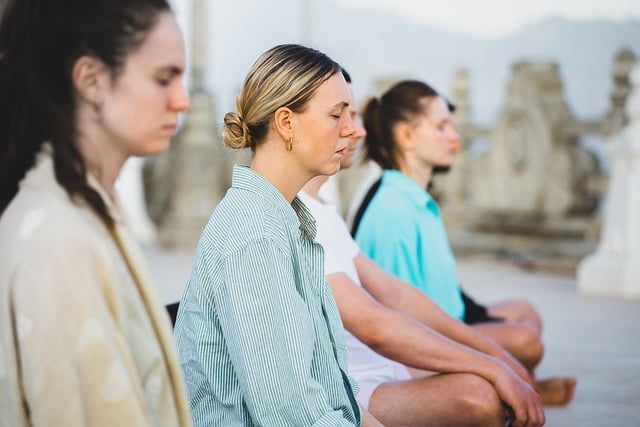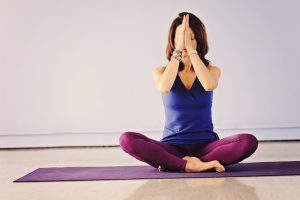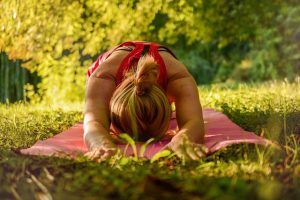Introduction
As we age, maintaining physical activity can become challenging, especially for seniors with limited mobility. However, staying active is crucial for overall health and well-being. Chair yoga offers a gentle yet effective way for seniors to stay active, improve flexibility, and enhance their quality of life.
Understanding Chair Yoga
Chair yoga is a form of yoga that is practiced while seated in a chair or using a chair for support. It adapts traditional yoga poses to make them accessible for individuals with mobility issues or balance concerns. This approach allows seniors to reap the benefits of yoga without the need for extensive physical exertion.
Benefits for Seniors with Limited Mobility
Chair yoga provides numerous benefits for seniors, including improved flexibility, increased strength, better posture, and enhanced mental clarity. It also helps in reducing stress, managing pain, and improving circulation. These benefits contribute to a better quality of life and greater independence for seniors.
Getting Started with Chair Yoga
Choosing the Right Chair
When starting chair yoga, it’s essential to select a sturdy chair without wheels. The chair should have a flat seat and backrest, providing adequate support. Ensure that the height of the chair allows the feet to rest flat on the floor.
Setting Up a Safe Space
Create a safe and comfortable space for practicing chair yoga. Ensure there is enough room around the chair to move freely. Use a non-slip mat under the chair to prevent any accidental slipping during exercises.
Warm-Up Exercises
Seated Marching
Begin with seated marching to warm up the body. Sit up straight and lift one knee at a time, mimicking a marching motion. This exercise helps increase blood flow and prepares the muscles for more intensive stretches.
Neck Rolls
Perform gentle neck rolls to release tension in the neck and shoulders. Slowly roll the head in a circular motion, first clockwise and then counterclockwise. Keep the movements slow and controlled to avoid dizziness.
Upper Body Stretches
Seated Mountain Pose
Sit tall with feet flat on the ground and hands resting on the thighs. Inhale and lift the arms overhead, stretching towards the ceiling. Hold for a few breaths, then exhale and lower the arms. This pose helps elongate the spine and improve posture.
Seated Cat-Cow Stretch
Place hands on the knees and alternate between arching the back and rounding the spine. Inhale to arch and lift the chest (Cow Pose), and exhale to round the spine and tuck the chin (Cat Pose). This stretch increases spinal flexibility and relieves tension.
Lower Body Stretches
Seated Forward Bend
With feet flat on the floor, hinge forward from the hips and reach towards the toes. Keep the back straight and only go as far as comfortable. This stretch focuses on the hamstrings and lower back, enhancing flexibility.
Ankle Rotations
Lift one foot off the ground and rotate the ankle in circular motions. Perform rotations in both directions, then switch to the other foot. Ankle rotations help improve joint mobility and circulation.
Strengthening Exercises
Seated Leg Lifts
Sit tall with feet flat on the floor. Extend one leg straight out in front, hold for a few seconds, and then lower it back down. Repeat on the other side. This exercise strengthens the quadriceps and improves lower body strength.
Seated Arm Raises
With arms at your sides, lift them out to the sides and up overhead, then lower them back down. Use light weights or resistance bands for added challenge. This exercise strengthens the shoulders and upper arms.
Balance and Coordination
Seated Side Bends
Sit tall with feet flat on the floor. Inhale and lift one arm overhead, then exhale and lean to the opposite side, stretching the side body. Repeat on the other side. This exercise improves balance and flexibility in the torso.
Seated Spinal Twist
Place one hand on the opposite knee and gently twist the torso to the side, looking over the shoulder. Hold for a few breaths, then switch sides. Twisting poses enhance spinal mobility and aid in digestion.
Cool Down and Relaxation
Seated Forward Fold
Hinge forward from the hips, allowing the arms to hang towards the floor. Let the head and neck relax. This pose calms the nervous system and stretches the back and hamstrings.
Guided Relaxation
Conclude the practice with a few minutes of guided relaxation. Close the eyes, take deep breaths, and focus on releasing any remaining tension in the body. This helps promote mental clarity and a sense of peace.
Incorporating Chair Yoga into Daily Life
Consistency and Routine
To experience the full benefits of chair yoga, practice regularly. Aim for at least 2-3 sessions per week. Establishing a routine helps reinforce the habit and maximizes the physical and mental benefits of yoga.
Listening to Your Body
Pay attention to your body’s signals during practice. Avoid pushing through pain or discomfort. Adjust poses as necessary and consult a healthcare professional if you have any concerns.
Conclusion: Embracing Chair Yoga for Enhanced Well-being
Chair yoga offers a safe and effective way for seniors with limited mobility to stay active and improve their quality of life. By incorporating gentle stretches, strengthening exercises, and relaxation techniques into your routine, you can enhance flexibility, strength, and mental clarity. Embrace chair yoga as a valuable tool for maintaining physical and mental well-being.
FAQs
How often should seniors practice chair yoga?
Aim for at least 2-3 sessions per week to experience the full benefits of chair yoga. Consistency is key to improving flexibility and strength.
Can chair yoga help with arthritis pain?
Yes, chair yoga can help alleviate arthritis pain by improving joint mobility and reducing stiffness. Always check with a healthcare professional before beginning any new exercise regimen.
Is chair yoga safe for all seniors?
Chair yoga is generally safe for most seniors, but it’s important to listen to your body and modify poses as needed.
What should I wear for chair yoga?
Wear comfortable, loose-fitting clothing that allows for easy movement. Avoid tight or restrictive clothing that could impede your practice.
Can chair yoga improve mental health?
Absolutely! Chair yoga incorporates relaxation techniques and mindfulness, which can help reduce stress, improve mood, and enhance overall mental well-being.




